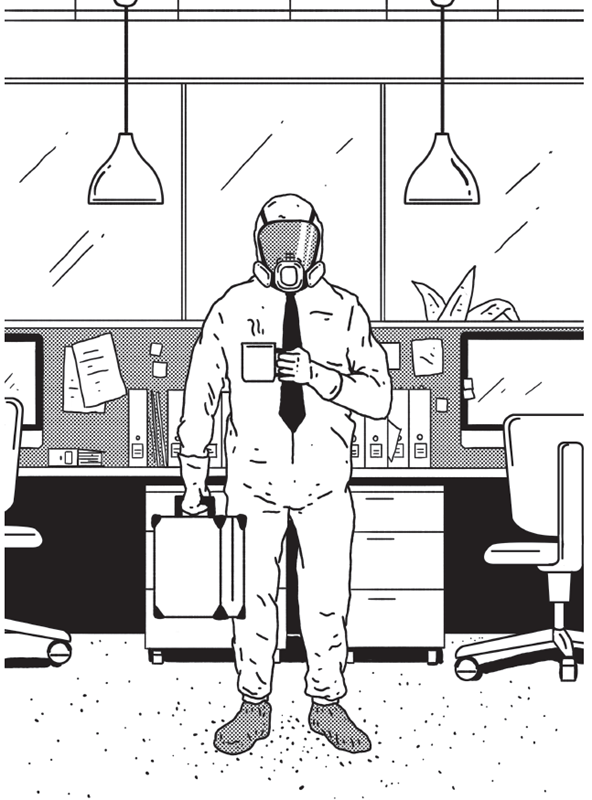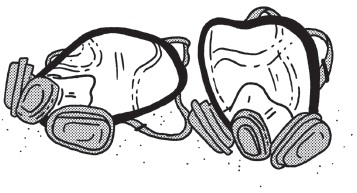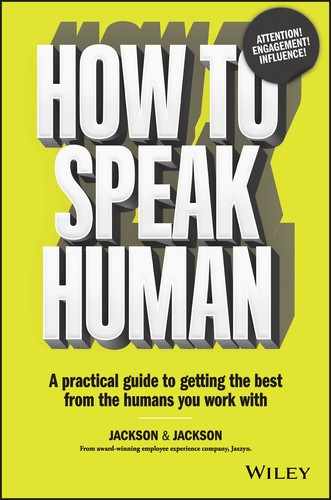
Beware …
The insidious fog of habituation
In The Art of War, Sun Tzu proposes you know your enemy. Who are we to argue with Sun Tzu? So let’s introduce you to yours. It isn’t attention — that’s the glorious spoils of victory. No, your enemy, your nemesis, the Brutus to your Caesar, is a phenomenon known as habituation.
Habit-you-what-now?
Oh, you might not have heard of it, but you’ve definitely felt it. If you’ve ever sat at the wheel of a car without remembering the details of the drive, lived below a flight path without noticing the planes passing overhead, found yourself able to conduct a perfectly normal conversation with other parents amid the chaos of a five-year-old’s birthday party, or found yourself zoning out while ads are playing on television, you, my friend, have been habituated.
Far more relevant to us, though, is the impact of habituation on communication.
The real enemy to seizing attention is located right inside our brains, and the way they’re wired to filter out the familiar. Which makes understanding — and beating — habituation very important indeed.
It’s all in our minds
Because we’re the type that likes to pulls things apart to see how they work, let’s take a metaphorical scalpel to skull and show you the innards.
Inside our brains are two minds: implicit and explicit. They work together, but don’t completely understand each other. Like an elderly couple, a horse and rider, or, in the delightfully everyman lingo of kc7wbq on Reddit, ‘Lizard and Big Daddy’:
Your mind is made up of two minds. You have the big daddy who is you and your conscious thoughts. He’s slow, but very smart. Then you have your lizard brain. He’s not so smart, but he’s fast. He’s the guy that catches a ball thrown at your face. Your big daddy brain likes to think about new things and big things. Once he starts to get bored he likes to pass tasks off to the lizard brain. This is called forming a habit, or learning a skill. When you first started to learn to drive a car, or travel a new road, your big daddy brain had to pay attention to make decisions and control your muscles. But now you’ve driven so much your lizard brain knows how to do it. If your big daddy brain wants to monitor what your lizard brain does that’s okay, and probably good from a safety point of view, but it’s not necessary any more.
To summarise with a little less dramatic flair, our implicit mind takes care of the routine tasks, the things that can be done automatically, freeing the explicit mind to think about other things. These are big thoughts, or daydreams even — our explicit mind freewheeling until the unexpected occurs. Surprise, shock or curiosity — these all snap our explicit mind back to attention.
The curious relationship between these two minds is the reason we can perform common tasks with very little conscious thought. And this makes repetitive jobs particularly prone to habituation. Factory work, routine office work, construction, driving — these are roles where habituation is most likely to occur, and where people are most likely to be on autopilot.
By now you might be wondering, why are our brains so hell-bent on blocking our attention? What possible purpose could habituation serve?
Well, it comes down to survival, and one inescapable truth …
We’re all animals
Here’s a potentially confronting fact: no matter the couture we drape our hairless hides in, the literature we read, or our proficiency at assembling a cheese and charcuterie board — we’re all just animals. And we have a few things in common with every other beast that roams this world — notably, a will to survive, and the ability to learn in order to survive.
This way of learning is habituation.
Over time, we learn not to respond to something that happens repeatedly without change, reward or punishment. This allows us to tune out the non-essentials and to focus fully on the things that matter — the things that really demand our attention.
Picture a young deer out in the woods. A sudden noise — a pine cone falling, perhaps — and the deer is startled! Ahh … but over time and many pine cones later, provided one doesn’t land on its head, the noise no longer startles the deer.
Then there’s communication at work.
Now, we’re fairly confident in assuming that the most critical injury ever inflicted by corporate comms was probably a paper cut, and the only fatality — death by PowerPoint. This places typical corporate communications low in our hierarchy of needs, and therefore less worthy of our attention.
Yes, Big Daddy just left the building; the Lizard’s in charge.
But how does it work exactly, and, more importantly, how do we beat it?
It’s a matter of exposure
The speed at which habituation occurs depends on four main factors:
- Frequency: The more often we’re exposed to something, the faster habituation occurs.
- Interval: The less time between exposures to something, the faster habituation occurs.
- Duration: The longer we’re exposed to something, the faster habituation occurs.
- Strength: The stronger something is, the faster habituation occurs. But here’s a catch: exposure to very strong stimuli results in slower habituation, and in extreme cases it may never occur at all.
Now, consider how most organisations communicate: a constant bombardment of calls, memos, posters, intranet announcements, meetings and emails by the million. And when design is involved, reach for the style guide; copy and paste.
High frequency, short interval, long exposure and high consistency — the perfect framework for habituation.
Yes, communicating with our people using the same methods and mediums, exactly the same language, tone and visual style, day in and day out, causes communication to become like the backgrounds of our daily commute — blurring by, blotted out.
Fortunately, most of the strategies contained in this book are proven habituation-breakers. Curiosity, anticipation, surprise, humour, visual — these are some of the ways we cut through habituation to win people’s attention.
We can also break habituation by attacking the causes.
Build a rhythm of unpredictability and delight
Change the stimulus, change the frequency, change the interval, change the duration, tone down the strength — these things break habituation.
We need to mix it up.
Change the medium, change the channel, change the style. If you always use posters, share a video. If you use video for everything, plaster the toilet doors with a poster or two. If safety posters have been gathering dust since mutton-chops were fashionable, tear them down and change them up. Never default to templates for the really important stuff.
It’s good to build rituals and establish routine, but never let them fade into predictable. Instead, build a rhythm of unpredictability and delight.
Consistency, consistency, consistency — grenade.
Shred the style guide
Words quite simply fail us when it comes to expressing the absurdity of external brand guidelines being used for internal communication, so we’ll borrow the words of Robin Williams from Dead Poets Society:
Excrement. That’s what I think of [style guides]. We’re not laying pipe. We’re talking about poetry … Now, I want you to rip out that page. Go on … Rip! … Rip it out! … We’ll perforate it, put it on a roll. It’s not the Bible … You’re not gonna go to Hell for this.
Somewhere out there in fluoro-lit cubicles, certain comms teams are all a-tremble. Someone just said a bad, bad thing.
We do feel the tiniest bit terrible for saying it. Design and branding is an integral part of our company’s DNA, so we wage war on style guides with a heavy heart. One half admiring the perfection of their consistency, the depth of their detail. The other half aware that for communicating internally, they are fundamentally flawed.
The problem is in their purpose. Brand guidelines are made to foster highly consistent communication, intended to strip out variation. Frequency, interval, duration, strength. These factors work extremely well to gain the attention of our customers, folk who are exposed to our branding and communication intermittently. But when we use the same techniques internally, to people exposed to the branding every single day …
Hello, habituation.
Unfortunately, the typical process in many organisations is to finish a job and send it to comms for approval. Here, folk who’ve studied Marketing and Branding do exactly what they’ve been taught and hired to do: standardise and conform. They run the style guide, sweat the detail, make it consistent. And, unintentionally — dip it invisible.
Once we’re habituated, it’s farewell attention — which is actually a success of sorts, because you can bet all further communication will be consistently ignored.
Effective communication in the workplace should consider more than the detail, more than the visual; it should focus on vision. The why. The culture. The values. The message. The stories. Without getting hung up on the precise leading for subheadings or the exact font weight for titles.
It should foster creativity; allow for variation. Let’s push past typical; let’s create something unique. Let’s stop external branding for internal communication, selling to the already-sold. Heck, leave the logos off completely — we’re quite sure everyone knows where they work.
Go ahead, dare to create communication that grabs attention and makes a difference. Dare to defy the style guide, and the people who blindly parrot it.
Rip! Rip! Rip it out …

